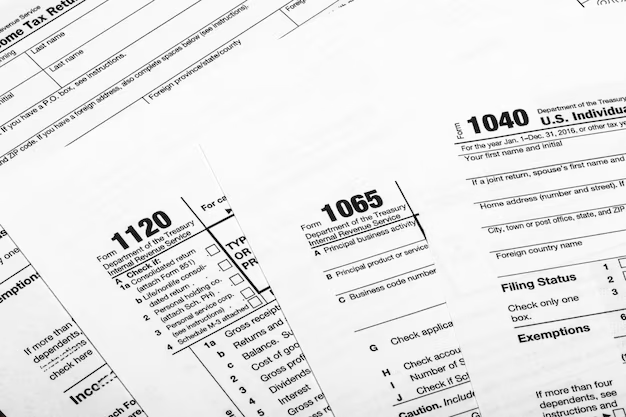Everything You Need to Know About Obtaining the 1040 Form
Filing taxes is a yearly ritual for most Americans, and the 1040 form is at the heart of this process. Whether you're filing for the first time or you're a seasoned taxpayer, knowing where and how to get your hands on a 1040 form is crucial. This comprehensive guide is designed to navigate you through various options to obtain the form, as well as offer additional tips and insights to make your tax season as smooth as possible.
What is the 1040 Form?
The 1040 form, commonly referred to as the "U.S. Individual Income Tax Return," is used by individuals to file their annual tax returns with the Internal Revenue Service (IRS). This form calculates your total taxable income and determines how much tax you owe or the amount of refund due to you. Understanding where and how to get this form is a vital first step in fulfilling your tax obligations.
Key Features of the 1040 Form
- Tailored for Individuals: This form is specifically designed for individual taxpayers, not businesses or other entities.
- Variety of Versions: There are different types of 1040 forms, including 1040-SR for seniors and 1040-NR for non-resident aliens, each catering to specific tax situations.
- Supporting Schedules: The form can be accompanied by additional schedules that address various types of income and deductions.
Where Can You Obtain the 1040 Form?
Obtaining your 1040 form can be done through several convenient methods. Here’s where you can find it:
1. Online Resources
The most accessible way to obtain a 1040 form today is online through the official IRS website. Here's how to go about it:
- IRS Website: Easily navigate to the forms section of the IRS website, where the 1040 form is available for download. Simply search for "1040 form" in the forms and publications section.
- PDF Format: The forms are available in PDF format, which you can print and fill out manually or fill in electronically.
2. Tax Software
Many individuals now resort to tax software for convenience and accuracy. These tools often include the latest 1040 forms:
- Built-In Forms: Most tax software programs incorporate the 1040 form directly, guiding you through the filing process.
- Direct Filing: After filling out the forms, you can usually file electronically through the software itself.
3. Local IRS Offices
If you prefer a physical copy or need assistance, visiting a local IRS office is a reliable option.
- In-Person Assistance: IRS offices can provide not only the form but also valuable guidance if you have questions.
- Availability May Vary: Call ahead to ensure they have the forms in stock, as availability can vary.
4. Public Libraries and Post Offices
Certain public areas also distribute hard copies of the 1040 form, although availability might be limited:
- Selected Locations: Not all libraries or post offices carry tax forms, so it's advisable to check with them in advance.
5. Professional Tax Preparers
Engaging the services of a tax professional can also simplify obtaining your 1040 form:
- Experts Provide Forms: Tax preparers often provide the necessary forms as part of their service, assisting you throughout the filing process.
What's New on the 1040 Form?
Tax laws and forms undergo changes from time to time. Here are a few updates you might encounter on the current 1040 form:
- New Deductions or Credits: Keep an eye out for any additional deductions or credits available, as they can significantly impact your tax liability.
- Form Layout Changes: Form versions sometimes have layout adjustments to improve clarity and ease of use.
Practical Tips for Using Your 1040 Form
🧾 Filling Out the Form
- Ensure Accuracy: Double-check all entries for accuracy to avoid processing delays.
- Attach Necessary Schedules: Depending on your financial situation, additional forms (schedules) may be needed.
📤 Filing the Form
- E-File When Possible: Electronic filing is faster and reduces the likelihood of errors.
- File by Deadline: Keep track of important deadlines to avoid late penalties.
📅 Record Keeping
- Save a Copy: Always keep a copy of your filed tax return for at least three years for reference and in case of an audit.
- Organized Records: Maintain an organized record of all tax documents, receipts, and relevant correspondences.
Summary and Key Takeaways
Here’s a succinct summary of everything you need to consider when obtaining and filing your 1040 form:
**📜 Variety of Sources: Obtain your 1040 form from the IRS website, tax software, local IRS office, or professional tax preparers.
**🎯 Be Updated: Regularly check for updates or changes in the tax laws that could affect your form.
**🕑 Timely Filing: Ensure you have all necessary documents and file your 1040 form promptly to avoid any penalties.
**🔒 Keep Records: Store copies of your form and supporting documents securely for future reference.
Using Resources Wisely
Navigating tax season can be stressful, but understanding where to procure your 1040 form and how to utilize it effectively is half the battle. By taking advantage of the many resources at your disposal, from online downloads to professional advice, you are much better positioned to manage your taxes efficiently.
Keep this guide handy each tax season to ensure you're always prepared to meet your tax obligations head-on.
